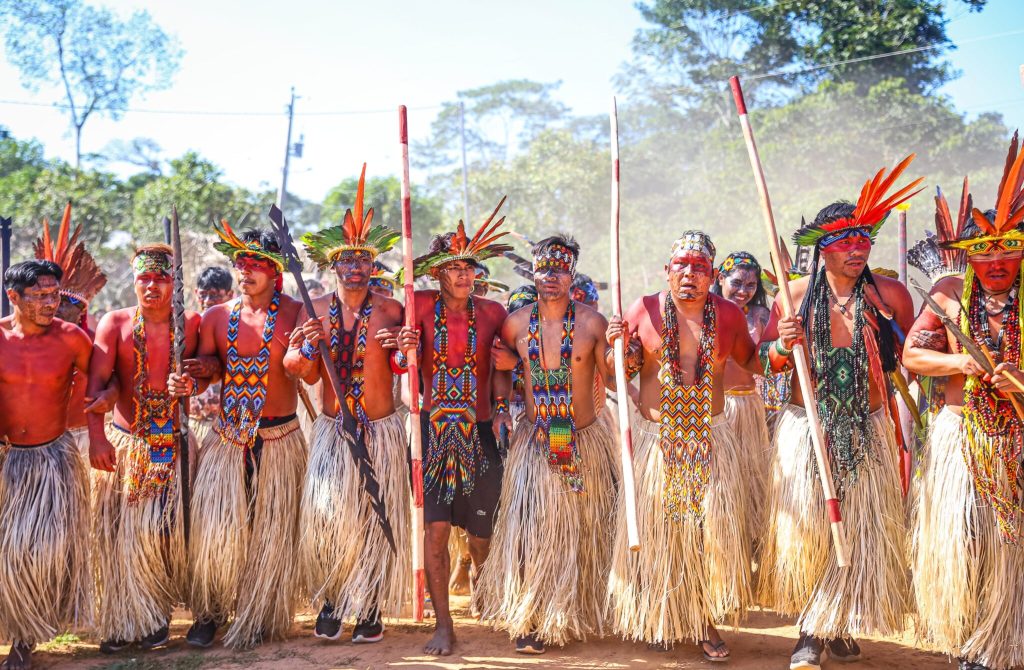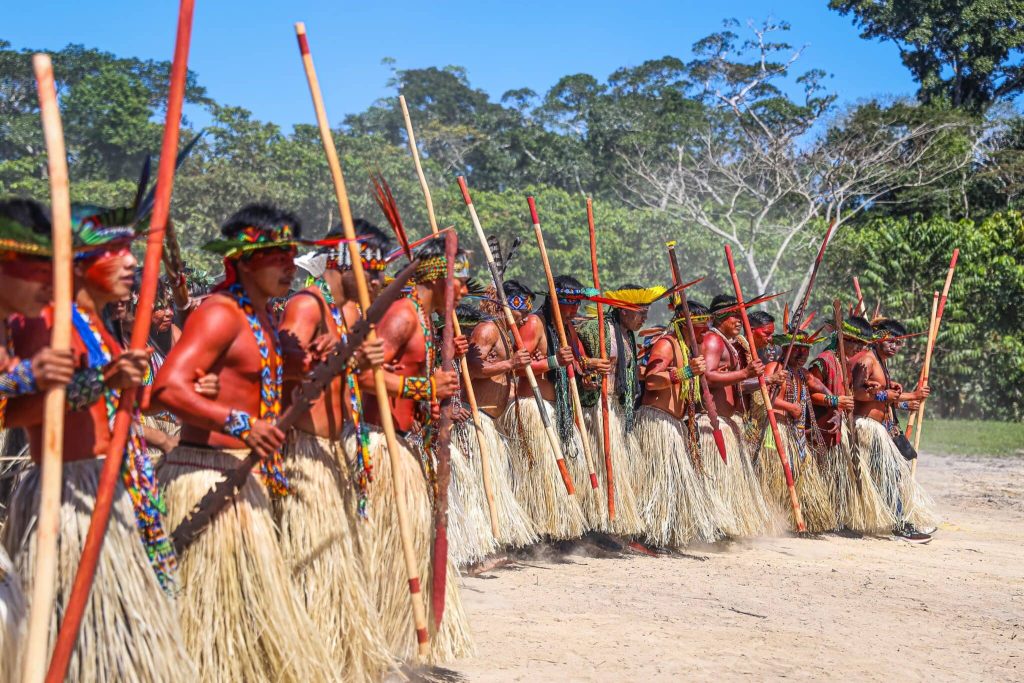Katukina Tribe / Noke Koi
The name Katukina is used to refer to a group belonging to the “Pano” linguistic family, a family they share with other ethnic groups such as the Huni Kuin or the Yawanawás. They prefer to call themselves Noke Koi, which could be translated as “True People”. Thanks to the work of young indigenous leaders of this tribe, this name is becoming increasingly popular and consolidated.

“Katukina” (or Catuquinha, Katokina, Katukena and Katukino) is the term adopted by the first settlers who arrived in the Amazon rainforest to distinguish the more submissive indigenous people from the more rebellious “kaxinawá”. This fact has led to confusion in the naming of several Amazonian tribes.
For this reason, “Katukina” is a term that has also been attributed to five other groups that, although they live in nearby areas, are linguistically and culturally different.
The Noke Koi (or Noke Kuin) live in the Jutaí River region, in the State of Amazonas, Brazil. Within the tribe, there are six different clans: Varinawa (people of the Sun), Kamanawa (people of the Jaguar), Satanawa (people of the Otter), Waninawa (people of the chontaduro), Nainawa (people of the Sky), Numanawa (people of the dove).
Some of these names are also used by the members of the Marubo tribe, which lives in an area near the Amazon rainforest.

Language and Geography
Portuguese is used exclusively to interact with foreigners, although only half of the population speaks it and there is a high rate of illiteracy.
The Katukina language belongs to the Pano language family. One of its main characteristics is nasalization. Most words are disyllabic, and new words can be formed from the combination of two words or the insertion of suffixes. Personal pronouns do not distinguish between genders. All Noke Koi speak their own language to relate to each other.
The Katukina inhabit two lands that are designated as “Indigenous Territories” by the Brazilian government in the early 1980s.
The first “Indigenous Territory” is located in the State of Acre, near the Gregório River, in the municipality of Tarauacá, and is an area where the Yawanawá tribe also lives, with whom they have had many conflicts throughout history. This land covers about 187 thousand hectares, and in it we find two Katukina villages, one on the banks of the Gregório River, and another on the banks of the Tauari River.
The second “Indigenous Territory” is the land of the Campinas River, of about 33 thousand hectares, on the border of the states of Acre and Amazonas in Brazil and between the municipalities of Tarauacá and Ipixuna. Cruzeiro do Sul is the closest urban center to the villages that are in this land, about 50km from the nearest village. There are five villages in this territory: Campinas, Varinawa, Samaúma, Masheya and Bananeira.
At the beginning of 2000, the paving works on the BR-364 highway (Rio Branco-Cruzeiro do Sul) advanced on the Campinas River Indigenous Land, modifying its ecological and economic conditions. For this reason, game animals are currently scarce, and the Noke Kuin have had to modify their diet and culture, being forced to buy industrialized products.
They have also had to accept the passage of people from outside their community through their lands, which endangers their traditions and is a subtle way of “invading” the territory that was legally recognized forty years ago.
Social and economic structure
According to FUNAI (National Indian Foundation), the Katukina have experienced a demographic growth of 300% in the last three decades. In 1977, this tribe had less than 200 people (100 inhabitants in the Gregório River Village and 77 in the Campinas River Village). Ten years later, in 2008, the Noke Koi had a population of almost 600 people.
In each of their two protected areas or “indigenous lands,” the Katukina are organized into small villages of up to 100 people, between which there are frequent movements of inhabitants, depending on the political, economic and social situation. Since the paving of the BR-364 highway in the early 2000s, the movement of people from one village to another has increased.
Within the villages, the Noke Koi are grouped by family nuclei in homes, usually malocas; open buildings with several rooms, made with local materials.
These family units are made up of an older couple, their unmarried sons and daughters, their married sons and their wives, and their children. This means that women, when they get married, go to live in the husband’s family home. (In the past, the newly married couple would move into the woman’s family home.)
These family units function as a united group when it comes to carrying out daily activities necessary for the entire community. A family unit can have between two and seven malocas, which are spread out along the shore at a distance from each other of five to fifteen minutes walking.
